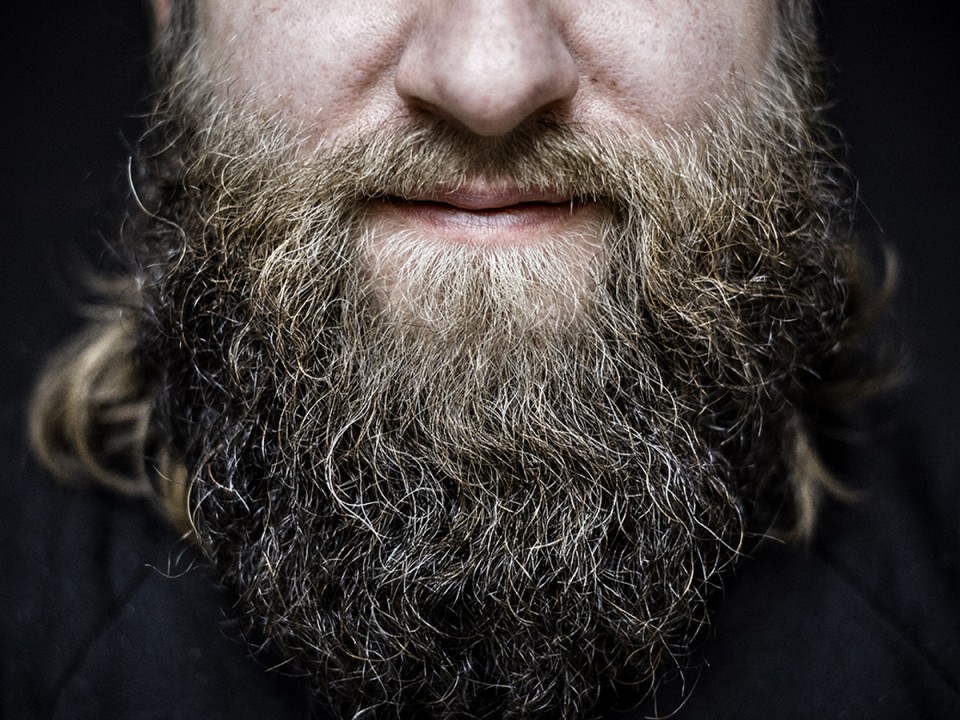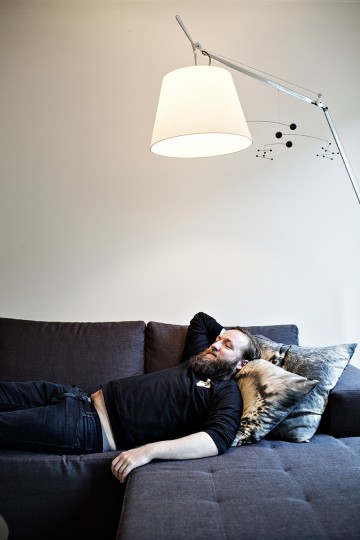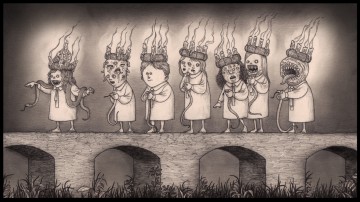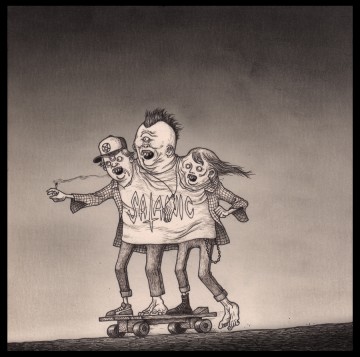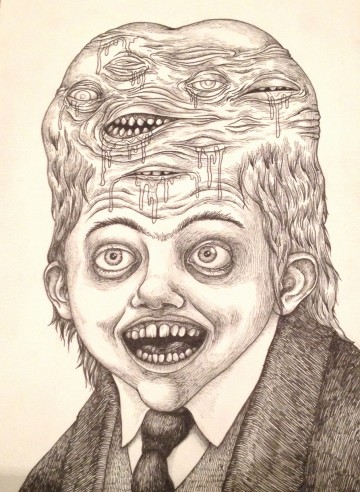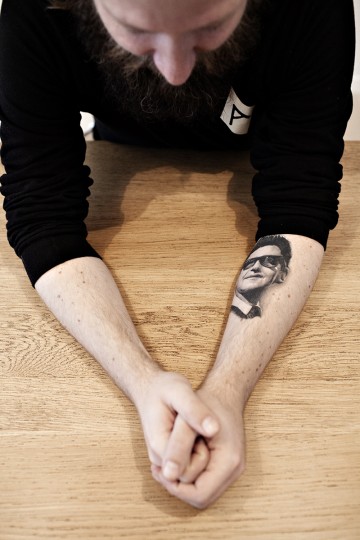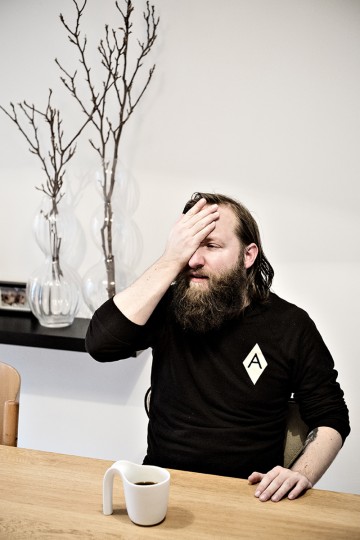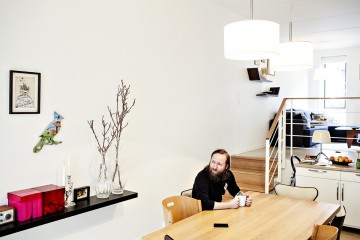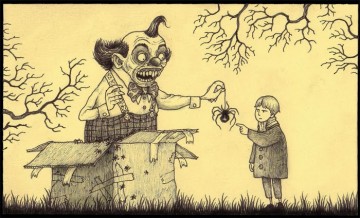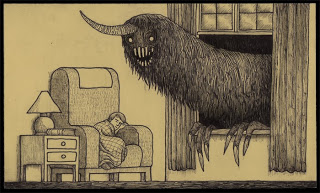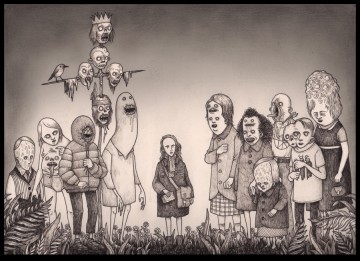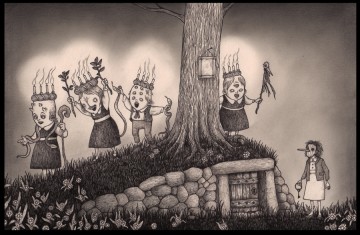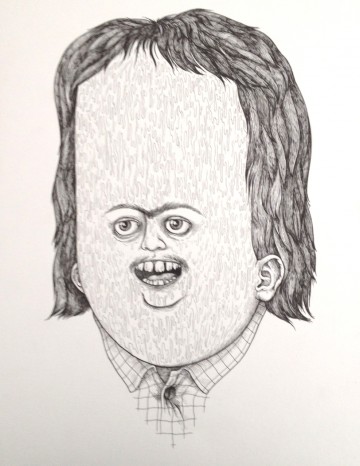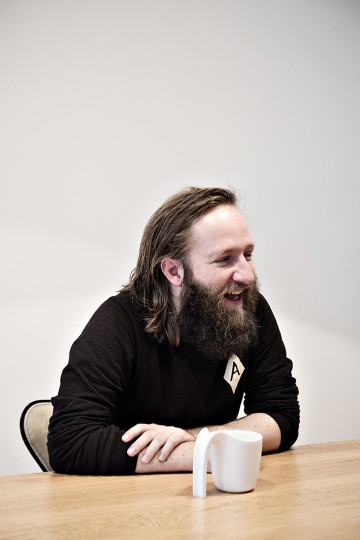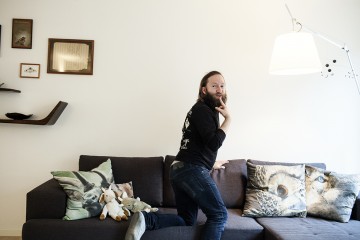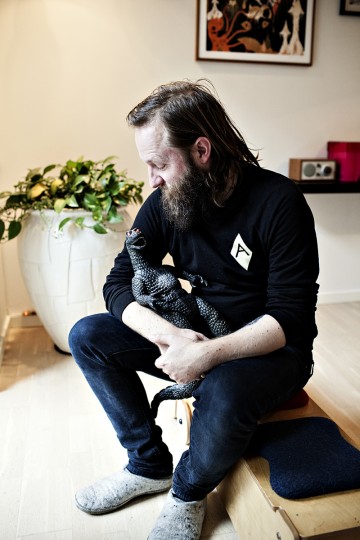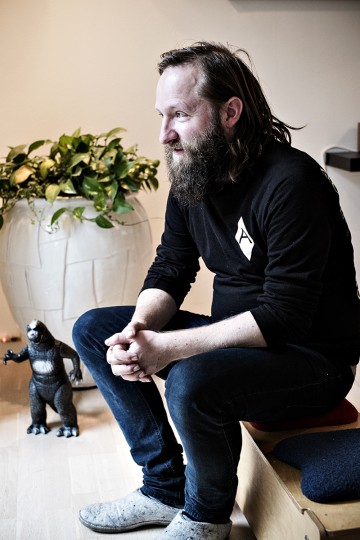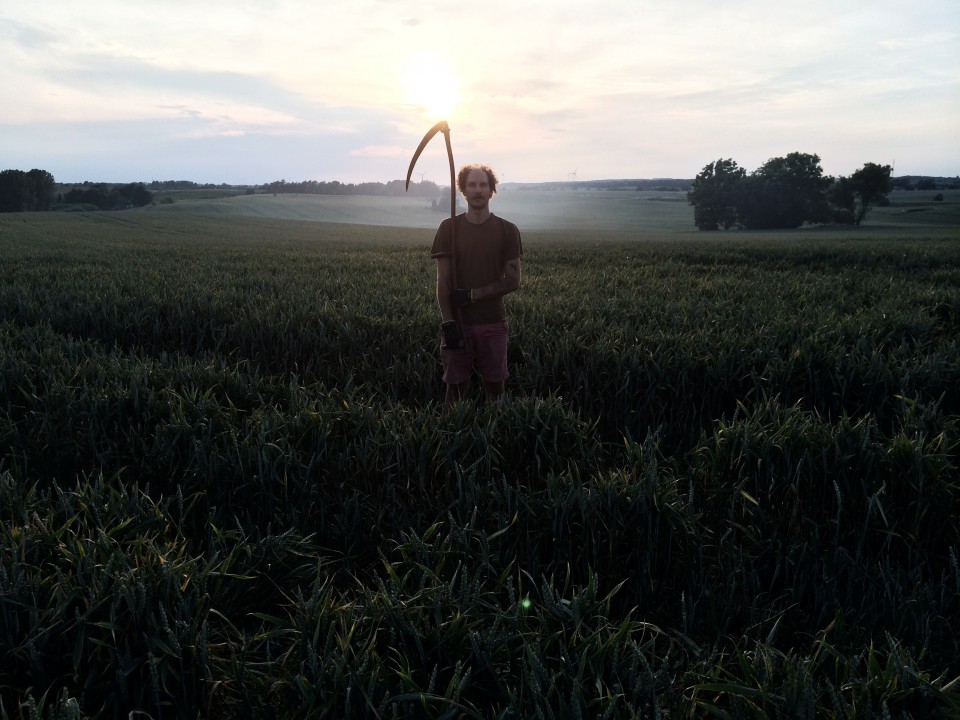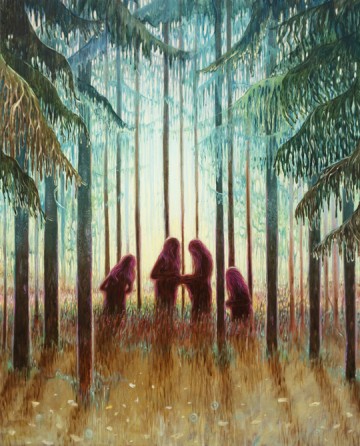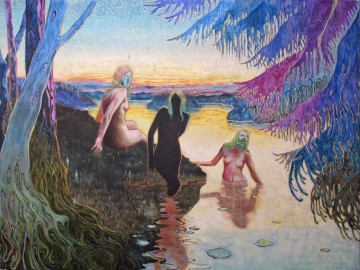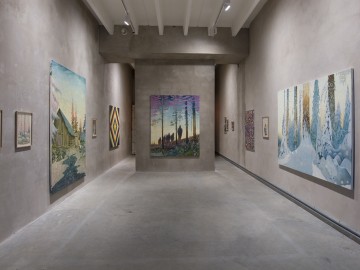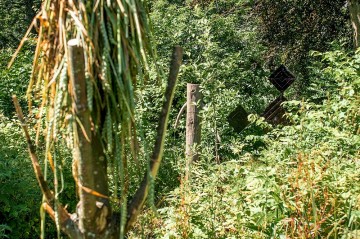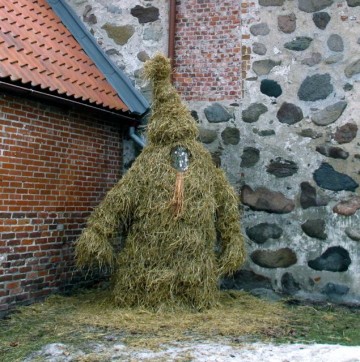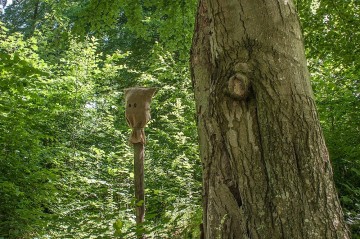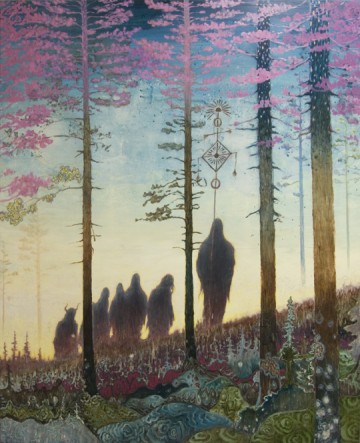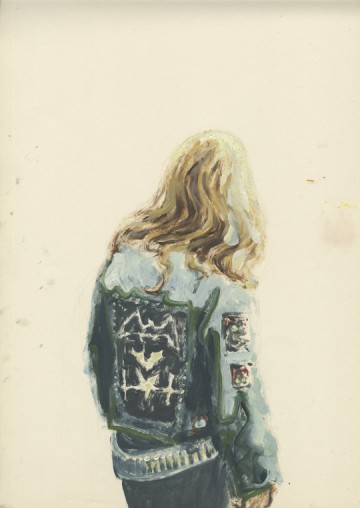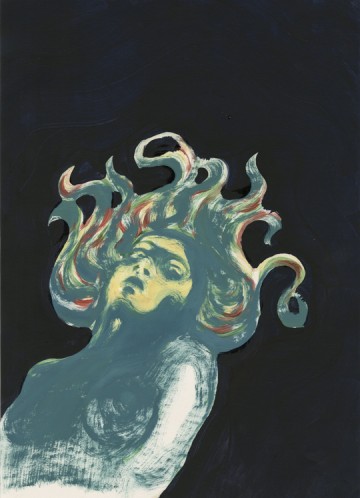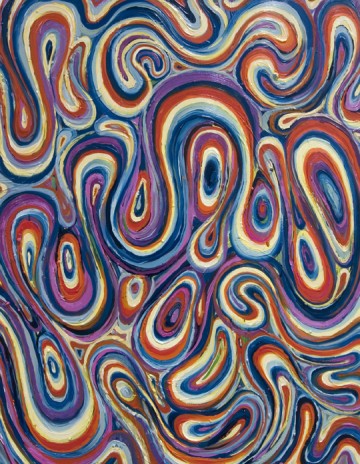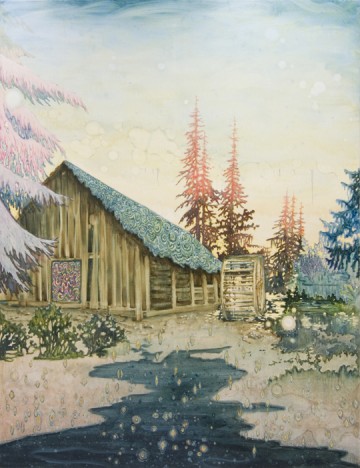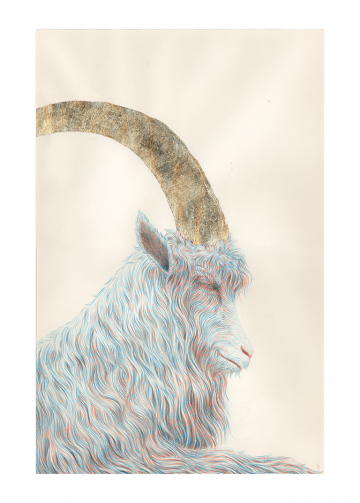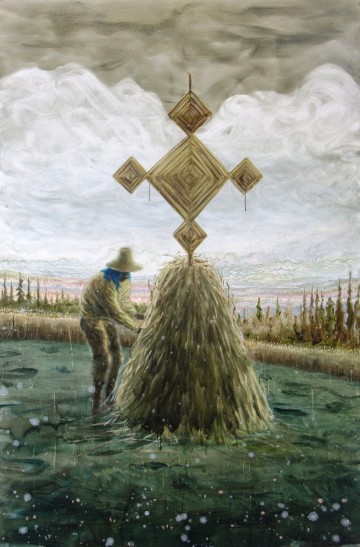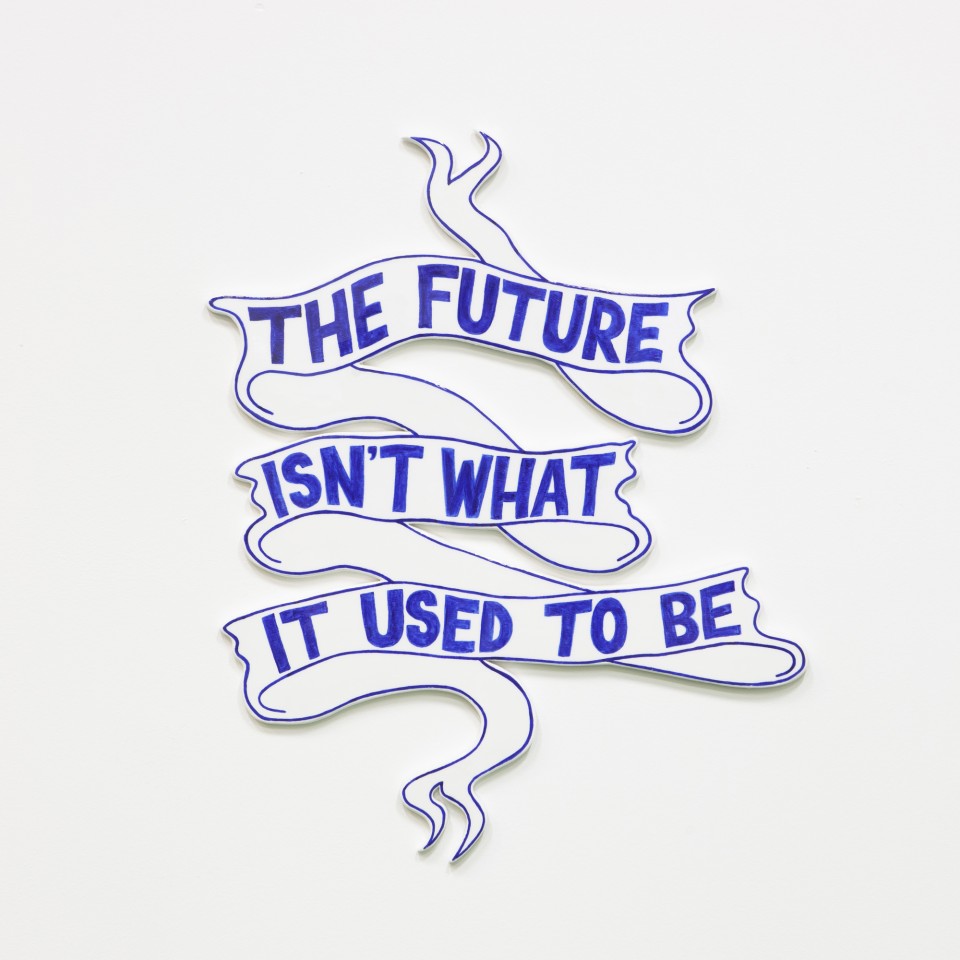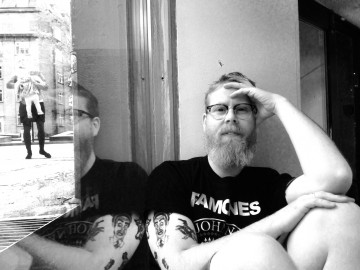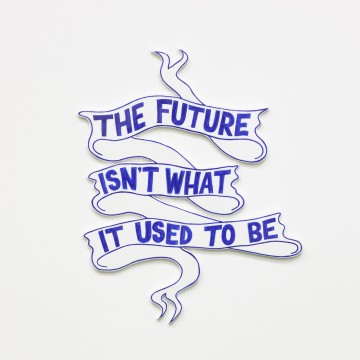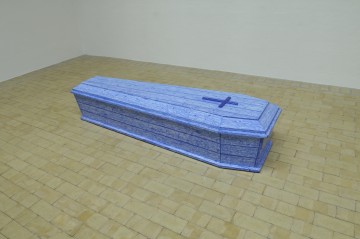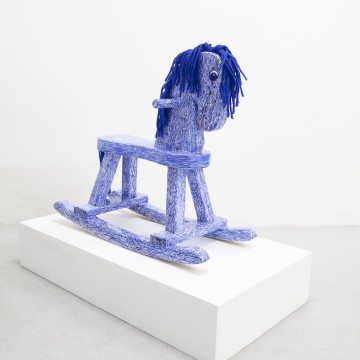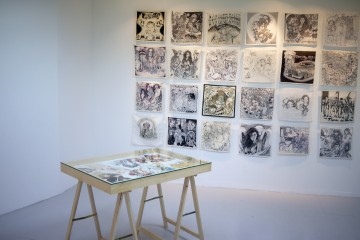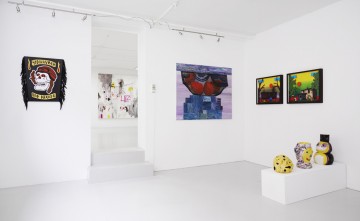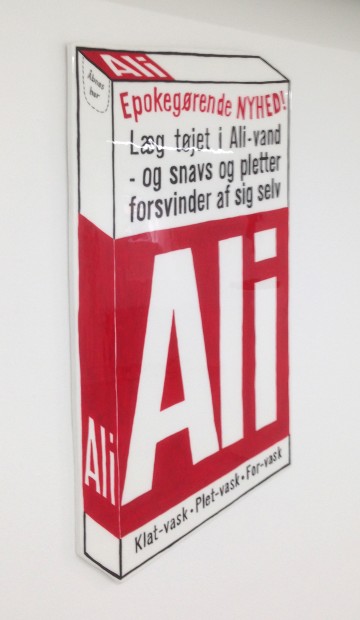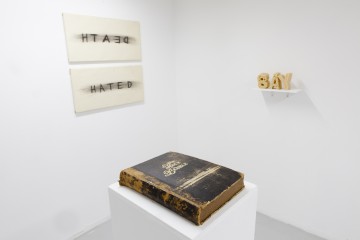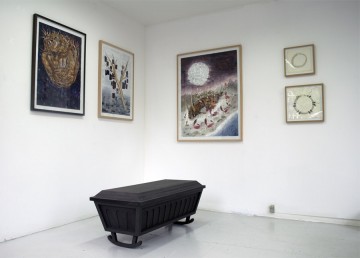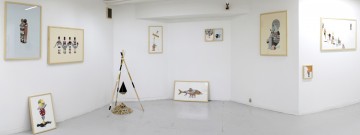All work photos courtesy of the John Kenn Mortensen corporation.
THE DOODLE-LIKE quality of Danish John Kenn Mortensen’s monster-drawings caught our eye, so we paid him a visit in his flat in the southern area of Copenhagen.
The hung over artist greets us with a big beard, very small eyes and a mild giggle.
Door Phone: “Who?! – shit, that’s right … come in, come in.”
M: “My Work is kind of a salute to the misfits of the world.”
M: “I feel like a misfit on the Danish art scene myself; there is a certain ‘jargon’ and code of conduct that I don’t really fit into.”
M: “Guess you could describe my work as low-brow art, if you’re into categories.
But in Denmark low-brow doesn’t really exist as a mainstream genre …
I don’t think they qualify as ‘illustrations’, I mean, illustrations illustrate something: a storyline or some sort of temporal process, whereas what I do are singular pieces, so it falls between categories
– a misfit in the true sense of the word.”
M: “It was like that in school as well actually: if you don’t fit in you end up with all the other misfits
and that’s actually pretty cool
– then you get to make up your own rules within the various groups of oddballs.”
M: “It’s not like I was a criminal or anything like that. I just doodled and listened to heavy metal instead of playing soccer – instant outcast.”
M: “Nowadays you have various diagnoses for that kind of behaviour like Asperger, ADD and crap like that – it’s all just an excuse to say ‘he’s not like us’.”
M: “I don’t have a clear intent for each and every drawing. But, hey, I hope the lonely and unadapted can see something in the stuff I do – I mean the best thing for a comedian must be if someone to actually laughed them selves to death.”
For more art work, info and a trip to the bookshop visit John Kenn Mortensen’s website here

